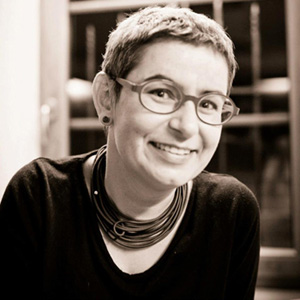
Katerina Kralova
When professor and scholar Katerina Kralova began researching the everyday life of Jewish communities of Central, East and South-East Europe after the Holocaust, she relied on the Visual History Archive as a crucial source for complex insights not found anywhere else.
At Charles University in Prague, Kralova is an assistant professor in contemporary history and area studies at the Institute of International Studies and the vice dean for international relations in the faculty of social sciences. As a member of Charles University’s Center for Collective Memory, she focuses her research on reconciliation with the Nazi past, post-conflict societies, memory and oral history of the Holocaust, Greek Civil War and post-war reconstruction in Southeastern Europe and particularly in Greece. Kralova is also the recipient of the 2015 Fellowship Award at the Jack, Joseph and Morton Mandel Center for Advanced Holocaust Studies at the United States Holocaust Memorial Museum.
Although she now works closely with the Malach Center for Visual History at Charles University, which is a Visual History Archive full access site, Kralova said it wasn’t until she met Holocaust survivors and Shoah Foundation interviewers during a fellowship in Greece that she realized how useful the testimonies could be for her academic work.
“[When I first heard about the Shoah Foundation] I was a high school student in a post-communist country in transition and I could not imagine I will ever use the VHA testimonies for my own research,” Kralova said. “Once the Malach Centre for Visual History was opened in Prague in 2010, which provided access to the Visual History Archive, I decided that I will try to gain from this source as much as I can not only for my research but also mediate it to my students.”
With her colleague Hana Kubátová, Kralova launched a book project on the return, restoration, memory and commemoration of Jewish communities of Central, East and South-East Europe within the post-conflict reconstruction period of 1944–1953. The two collaborated with three senior researchers and 13 graduate students to write a volume of 13 case studies, which utilized about 200 testimonies from the Visual History Archive in nearly two dozen languages.
“No similar publication in this extent on a comparative level based on the Holocaust survivors´ testimonies was ever published, let alone about the often underexplored regions in focus,” Kralova said. “The VHA testimonies were the only possibility to have at least a little complex insight into the post-war everyday life of the Holocaust survivors.”
The researchers were interested in how survivors lived with their past and how they functioned in such an abnormal context of persecution, the obstacles they had to overcome in order to start up again and reintegrate, and how they maintained their identity in the face of the Holocaust experience.
Kralova said that these topics remained, until now, largely unexplored and in many countries they still constitute a social and political taboo.
The research has been presented at several international workshops and the book will be published by the prestigious Czech publishing house Charles University Press Karolinum later this year. Kralova also hopes to find financial support for an English translation.
Thanks to the great effort of the Malach Centre and the Jewish Museum in Prague as well as to the relentless determination of the survivors, Holocaust survivor testimonies are a widely-used source of research and education in the Czech Republic, Kralova said. From her perspective, their biggest contribution is in their coverage of the pre- and post-war periods.
“Persecution did not start by itself and the traumatic experience did not end once the war was over,” she said. “Our project made use of the Holocaust survivors´ accounts exactly from this perspective.”